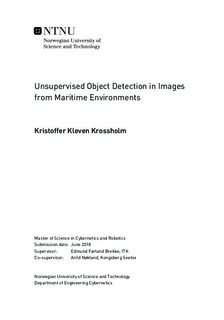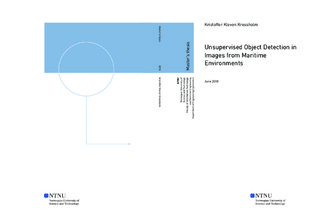| dc.description.abstract | Autonomous surface vehicles (ASVs) are likely to revolutionize the maritime industry in the near future. To obtain situation awareness and avoid collisions, information from various types of sensors is needed. Visual cameras mounted on an ASV provide a detailed description of its surroundings.
In this thesis, an algorithm for object detection in images based on unsupervised learning is implemented and tested. Different from supervised learning, unsupervised learning algorithms have no ground truth to use as guidance for learning what type of objects it should detect. This saves a large amount of human labor, and enables detection of objects the algorithm has not seen before.
The object detection algorithm is based on a neural network, specifically an autoencoder, that is trained to represent visual ocean features well, while highlighting what it consider anomalous. Hence, the algorithm relies on the assumption that objects are represented as anomalies in the image data.
The evaluation shows that the algorithm at its best is able to detect all objects. However, this comes at the expense of a high number of false positives. The maritime environment contains a lot of natural features, such as waves, that stand out visually. These are often considered anomalous by the algorithm, and therefore detected as objects. | |

